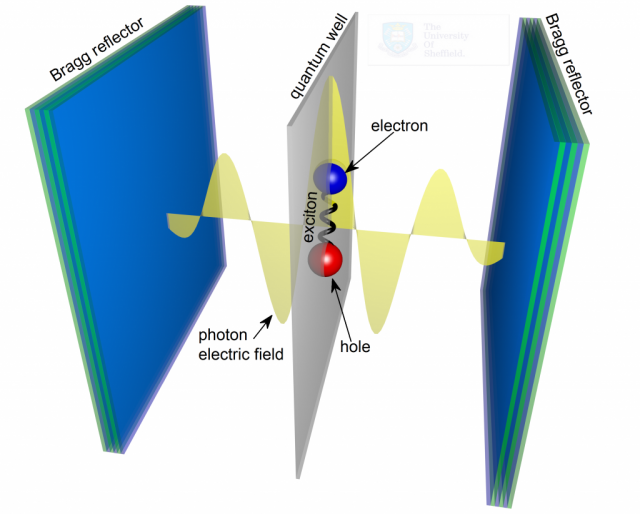What is an exciton-polariton?

In a semiconductor material, an electronic excitation corresponds to the passage of an electron from the valence band to the conduction band. There is then a free electron and a hole, of opposite charges, which can form a bound state: an exciton.
Thanks to modern epitaxial methods, it is possible to confine these excitons in planar quantum wells, themselves confined in an optical cavity (by growth of Bragg mirrors on both sides of the wells). A semiconductor microcavity is typically formed of several quantum wells contained in a planar cavity, the fundamental frequency of which is adjusted to the energy of an exciton.
A laser, near-resonant with the optical cavity, is sent on the microvavity. This floods the optical cavity with photons, which creates excitons in the quantum wells. Photons and excitons are coupled fields and, in the strong coupling regime (typically at cryogenic temperature), the eigenstates of the system are excitons dressed with photons.
This quasi-particle is called an exciton-polariton. They are half-light/half-matter particles with unique properties, including a strong Coulomb interaction from the excitonic part, that creates an effective interaction between cavity photons. This photon-photon interaction is the driving force behind the phenomena I studied in my PhD thesis.
If you want to know more, I invite you to watch the excellent tutorial video made by the Low Dimensional Structures & Devices group from the University of Sheffield: https://ldsd.group.shef.ac.uk/what-is-a-polariton/

